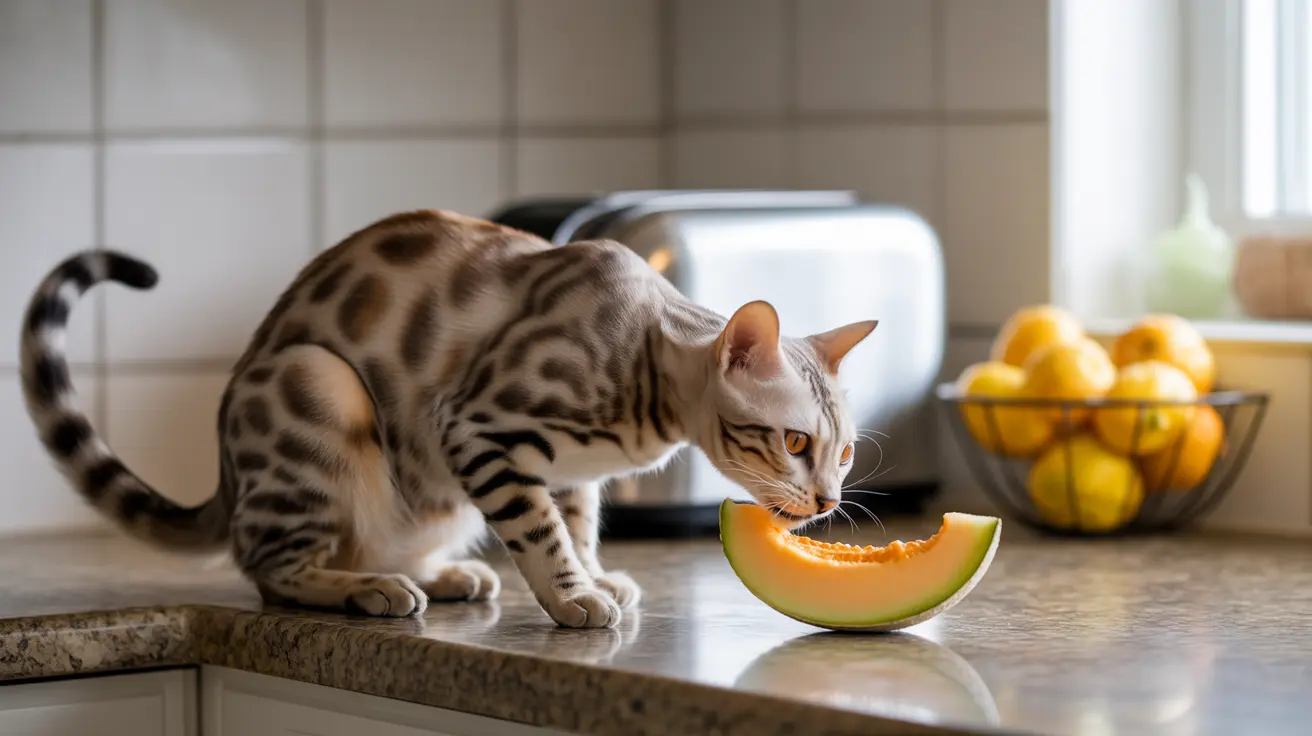Safe Melon Varieties for Cats
Cats can safely consume several types of melon, including:
- Watermelon
- Cantaloupe
- Honeydew
Each of these varieties is non-toxic to cats when properly prepared and served in moderation. Cantaloupe, in particular, may attract some cats due to its unique aroma that contains compounds similar to those found in meat proteins.
Proper Preparation and Serving Guidelines
Before offering melon to your cat, follow these essential preparation steps:
- Remove all seeds and rinds completely
- Wash the melon thoroughly to remove pesticides
- Cut into small, bite-sized pieces
- Serve fresh, never processed or artificially flavored
- Offer only plain melon without any additives or seasonings
Health Benefits and Limitations
While melon can be a safe treat, it's important to understand its role in your cat's diet:
Benefits:
- High water content (over 90%) for hydration
- Low in calories
- Contains some vitamins and minerals
- Can serve as an engaging treat option
Limitations:
- Minimal nutritional value for cats
- Natural sugars can contribute to weight gain
- Not a substitute for proper cat food
- Should only comprise a tiny fraction of daily food intake
Potential Risks and Warning Signs
Watch for these potential issues when feeding melon to your cat:
- Digestive upset (diarrhea, vomiting, or constipation)
- Allergic reactions (rare but possible)
- Choking hazards if pieces are too large
- Blood sugar spikes in diabetic cats
Frequency and Portion Control
Follow these guidelines for safe melon consumption:
- Limit treats to 1-2 small pieces occasionally
- Never exceed 10% of daily caloric intake
- Start with tiny amounts to test tolerance
- Monitor response for 24 hours after first serving
Frequently Asked Questions
Can cats safely eat different types of melon like cantaloupe, watermelon, and honeydew?
Yes, cats can safely eat cantaloupe, watermelon, and honeydew melon when properly prepared. All seeds and rinds must be removed, and the flesh should be cut into small, manageable pieces. Each variety is non-toxic to cats, though some may prefer one type over others.
How should I prepare melon before giving it to my cat to avoid health risks?
Thoroughly wash the melon, remove all seeds and rind completely, and cut the flesh into small, bite-sized pieces. Serve only fresh melon without any additives or seasonings. Never offer processed melon products or those containing artificial sweeteners.
What are the benefits and potential risks of feeding melon to my cat?
Benefits include hydration from high water content and a low-calorie treat option. Risks include potential digestive upset, blood sugar increases in diabetic cats, and possible choking hazards if not properly prepared. Some cats may also experience allergic reactions, though this is rare.
How much melon can I give my cat without causing digestive problems or weight gain?
Offer only 1-2 small pieces occasionally, never exceeding 10% of their daily caloric intake. Start with tiny amounts to test tolerance, and monitor for any adverse reactions. Melon should be an occasional treat, not a regular part of their diet.
Are there any health conditions that mean my cat should avoid eating melon?
Cats with diabetes, obesity, or digestive sensitivities should avoid melon or consume it only with veterinary approval. Cats with known fruit allergies or those on specific dietary restrictions should also avoid melon. Always consult your veterinarian if your cat has any underlying health conditions.
Remember, while melon can be a safe occasional treat for most cats, it should never replace their regular meat-based diet. Always observe your cat's reaction when introducing any new food, and consult your veterinarian if you have specific concerns about your cat's diet.






